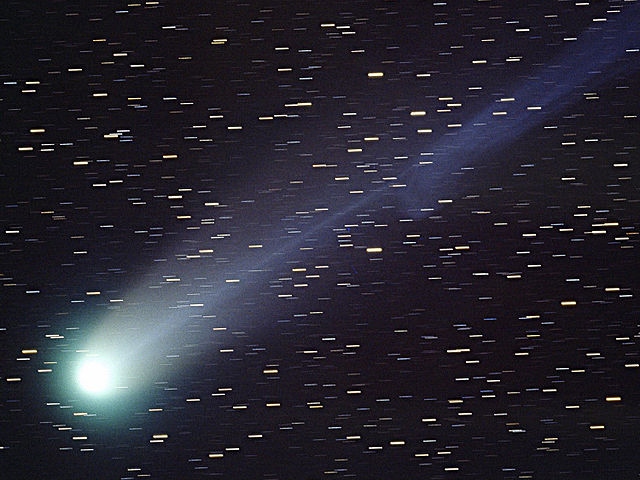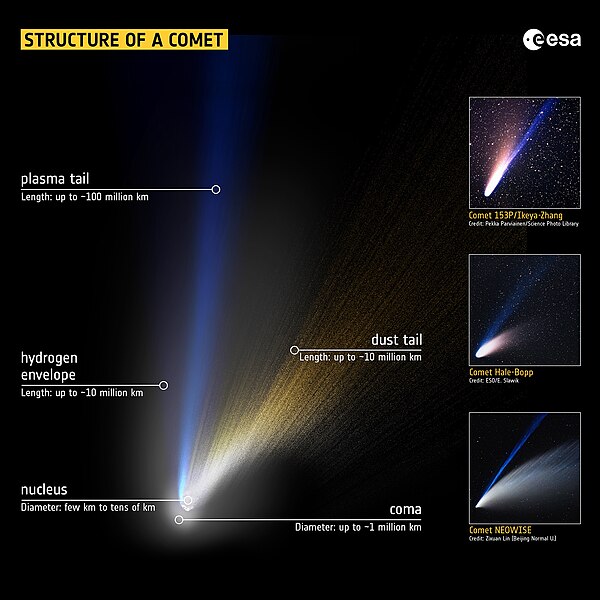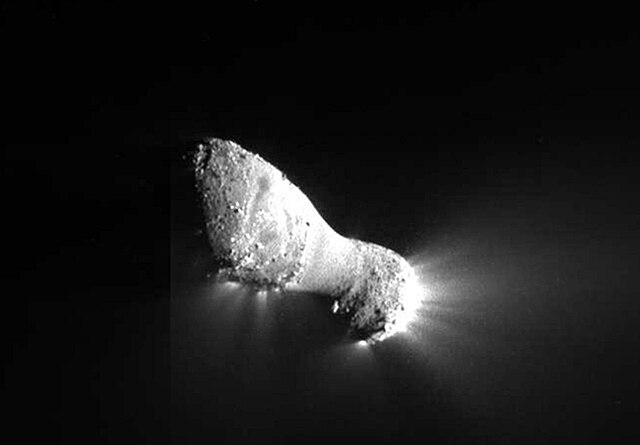An interstellar object is an astronomical object in interstellar space that is not gravitationally bound to a star. This term can also be applied to an object that is on an interstellar trajectory but is temporarily passing close to a star, such as certain asteroids and comets. In the latter case, the object may be called an interstellar interloper.
Interstellar visitors in the Solar System cover the whole range of sizes – from kilometer large objects down to submicron particles. Also, interstellar dust and meteoroids carry with them valuable information from their parent systems. Detection of these objects along the continuum of sizes is, however, not evident.
Comet Hyakutake (C/1996 B2) might be a former interstellar object captured by the Solar System
2I/Borisov comet, the second confirmed interstellar object, photographed in late-2019 beside a distant galaxy
A comet is an icy, small Solar System body that warms and begins to release gases when passing close to the Sun, a process called outgassing. This produces an extended, gravitationally unbound atmosphere or coma surrounding the nucleus, and sometimes a tail of gas and dust gas blown out from the coma. These phenomena are due to the effects of solar radiation and the outstreaming solar wind plasma acting upon the nucleus of the comet. Comet nuclei range from a few hundred meters to tens of kilometers across and are composed of loose collections of ice, dust, and small rocky particles. The coma may be up to 15 times Earth's diameter, while the tail may stretch beyond one astronomical unit. If sufficiently close and bright, a comet may be seen from Earth without the aid of a telescope and can subtend an arc of up to 30° across the sky. Comets have been observed and recorded since ancient times by many cultures and religions.
Comet Hale-Bopp
Structure of a comet
Nucleus of 103P/Hartley as imaged during a spacecraft flyby. The nucleus is about 2 km in length.
Comet 81P/Wild exhibits jets on light side and dark side, stark relief, and is dry.







